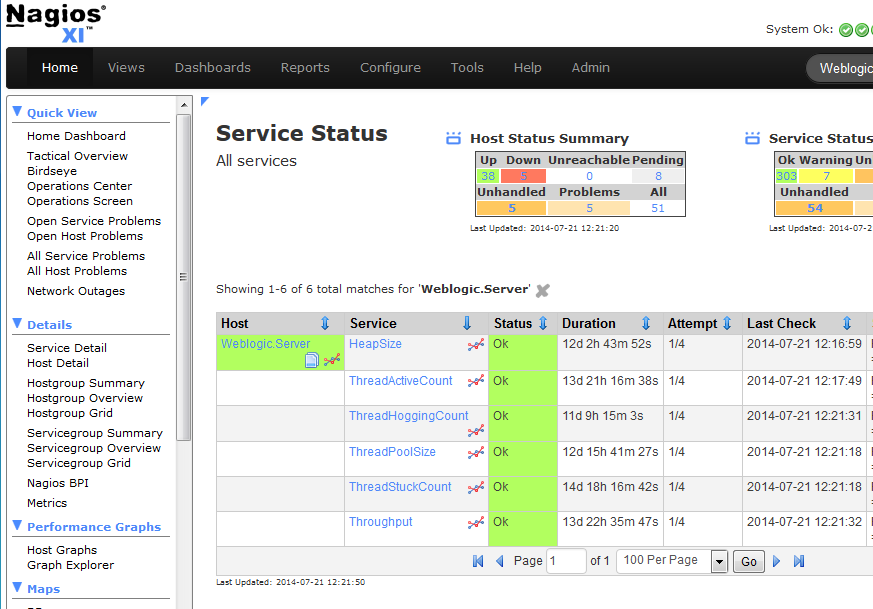Weblogic is a popular Java-based application server that acts as a middleware between the application and the Java environment. It provides a framework for developing traits such as reliability (recovering from failures), scalability (dynamic service scaling) and security (unified security system for apps). Nagios XI has the ability to monitor various aspects of Weblogic using wlsagent as outlined in our document Monitoring WebLogic With Nagios XI. In this post I will expand upon some of those metrics, such as what they mean and why they are important. Links to further reading will be provided where relevant.

Continue reading ‘Monitoring Weblogic Metrics with Nagios XI’


 latest Nagios XI – Amazon EC2 cloud images have been pushed out to the following additional location:
latest Nagios XI – Amazon EC2 cloud images have been pushed out to the following additional location:











